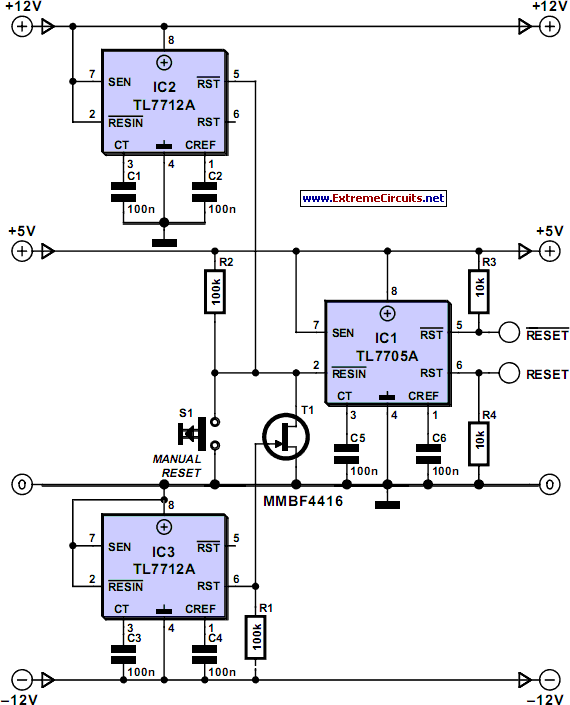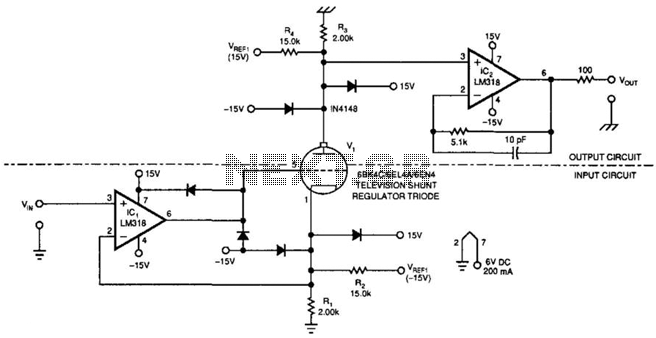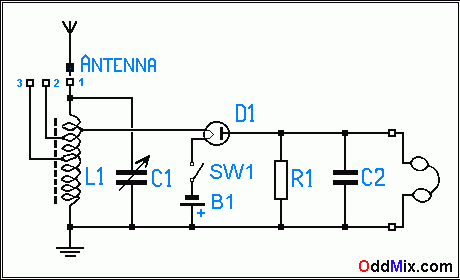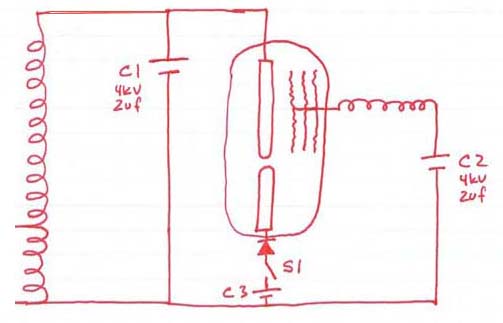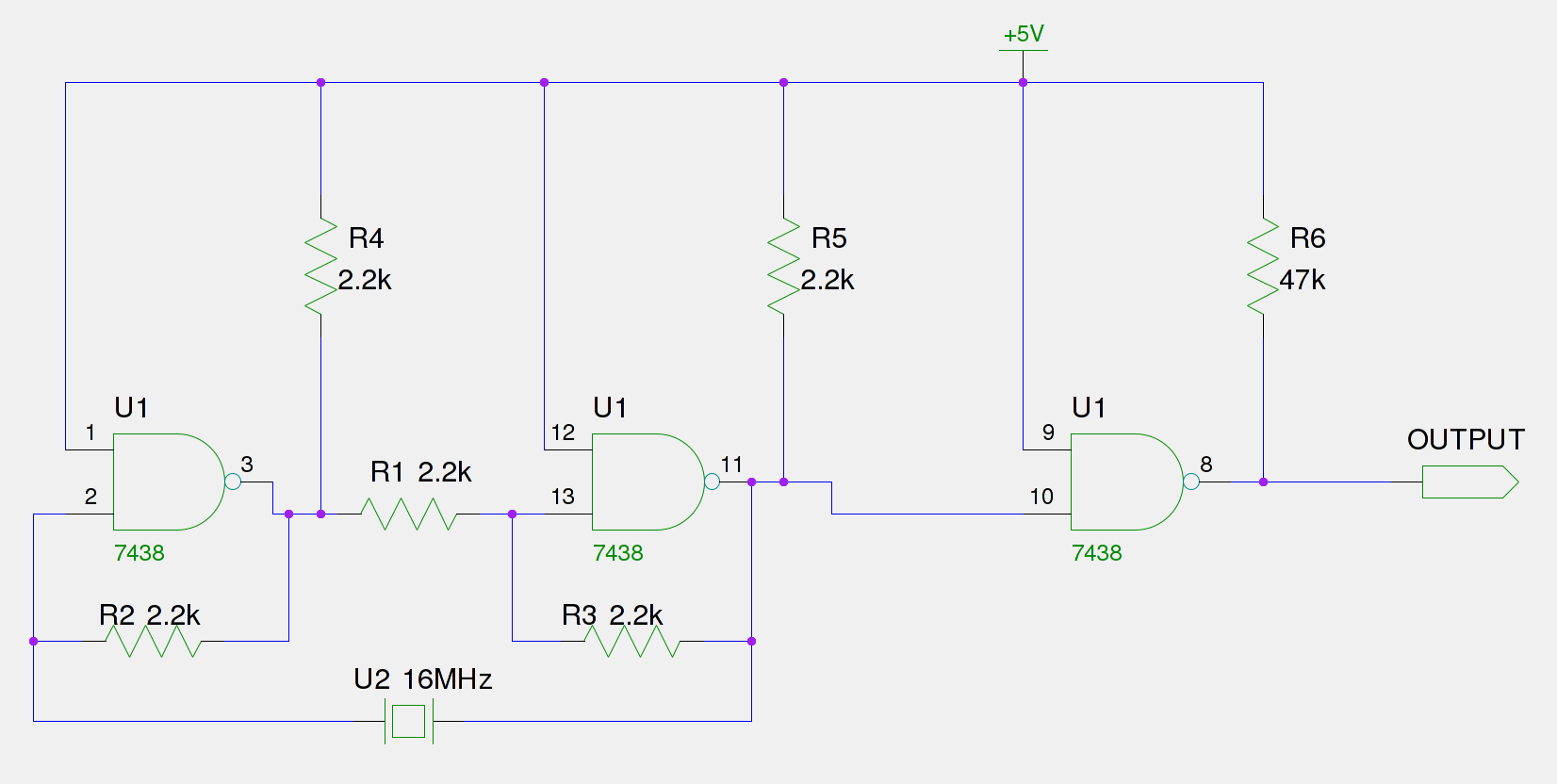
A E1T Decade Scaler Tube raised from the dead
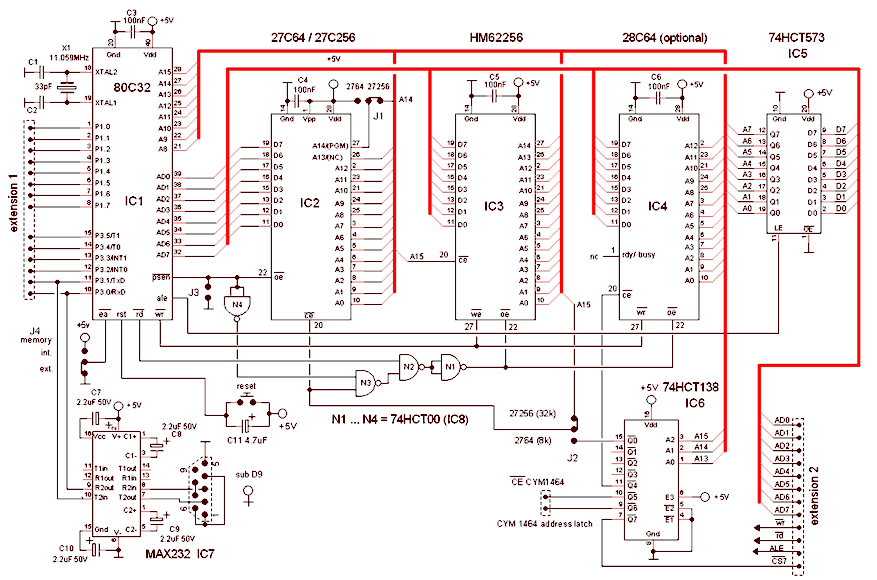
The E1T tube has been a part of the family for many years. It was likely brought home by my father, who worked at the Shell laboratory in Rotterdam, or purchased from surplus shops we visited on Saturday mornings during my childhood. This unusual tube was often played with, and I assumed it was broken, so I did not take care of it or attempt to use it. However, the datasheet indicated that it is not merely a display device but counts pulses and displays the sum, suggesting it has a memory equivalent to 3.5 bits and can generate a carry for the next digit. Working at the Philips Research Laboratory in Eindhoven, I discovered a paper in the Philips Technical Review that detailed the E1T tube, describing it as a remarkable piece of vacuum tube engineering. While Dieter classifies it as a "beam Deflection Decade Counter Tube," Joris Roehrenbude refers to it as a Trochotron, which is a misleading classification. Philips ultimately named it the "Decade Scaler Tube" to avoid confusion with counter tubes like Geiger-Muller tubes. Additional internal research reports from 1949 indicated that working samples of the E1T were available, with the first external publication marking its market introduction in 1952. I acquired a second E1T tube recently and successfully revived both tubes, witnessing the filament glow for the first time in decades. If anyone has spare E1T tubes, please reach out via email.
The E1T tube is a specialized vacuum tube designed for counting and displaying pulses, functioning as a decade scaler. Its architecture allows it to store and process information equivalent to 3.5 bits, facilitating the counting of sequential pulses. The tube's internal structure incorporates a memory mechanism that enables it to generate a carry signal, which is crucial for cascading counts beyond a single digit. This feature is particularly valuable in applications requiring precise counting and display, such as in digital clocks or other timing circuits.
The E1T tube is classified as a beam deflection decade counter tube. It employs electron beam deflection techniques to achieve its counting capabilities, utilizing a series of electrodes to manipulate the path of the electrons emitted from the cathode. This manipulation allows for accurate pulse counting and the display of results on a phosphorescent screen.
The Philips Research Laboratory's documentation highlights the importance of this tube in the evolution of electronic counting devices. The reports from 1949 indicate that the E1T was rigorously tested, ensuring that its performance met the expected standards without requiring extensive calibration upon replacement. This reliability made the E1T suitable for integration into various electronic systems.
The transition of the E1T from research to production was marked by internal reports that emphasized critical construction aspects influencing performance. These reports provide insights into the manufacturing processes and design considerations that contribute to the tube's functionality and longevity.
The E1T tube represents a significant advancement in vacuum tube technology, bridging the gap between traditional counting mechanisms and the emerging digital era. Its aesthetic appeal, combined with its technical capabilities, has made it a subject of interest for collectors and enthusiasts in the field of vintage electronics. The revival of such tubes not only preserves a piece of engineering history but also allows for experimentation and innovation in modern electronic designs.The E1T tube you see on the left has been "in the family" for as long as I can remember. Probably my father took it home from work (he worked at the Shell laboratory in Rotterdam) or he bought it in one of the surplus shops in Rotterdam my father and I used to visit every Saturday morning when I was a child. Because it was such a strange and funny looking tube we always used to play with it. Being under the assumption that the tube was broken, I was never particularly careful with it, nor did I make any attempt to bring the tube to life. From the commonly available datasheet, I knew that this was not just a display device, but that the tube actually counts pulses and additionally displays the sum.
This implies that the tube has a memory of the equivalent of 3. 5 bits! On top of that, the tube even has a provision to generate a carry for the next digit. How did they do it I work at the central Philips Research Laboratory in Eindhoven, Holland. Obviously, the Lab keeps a complete archive of all research reports and papers. Browsing through some old volumes of the Philips Technical Review in the library, I happened to stumble across a paper, which described the E1T tube in great detail [1]. It is one word beautiful! The whole paper reads like a poem, it is so elegant and ingenious; undoubtedly one of the masterpieces of vacuum tube engineering.
Unfortunately there does not appear to be a fancy and concise name for the tube. Dieter categorizes the tube as a "beam Deflection Decade Counter Tube" [2]. I would have liked to believe Joris Roehrenbude who categorizes the E1T as a Trochotron [3]. It sounds a hell of a lot more interesting than a "Decade Counter Tube". Unfortunately on further investigation it appears that a Trochotron is really something completely different [4]. Philips itself finally adopted the name "Decade Scaler Tube" [5]: "The E1T, previously referred to as a "counter tube", is now termed a "Scaler Tube" to preclude confusion with counter tubes such as Geiger-Muller tubes etc.
" Digging in the lab`s archives I found two additional "Internal Research Reports" related to the E1T. The first report dates from February 1949 [6]. It is a short 3 page memo with some measurement results on 6 sample tubes, which had been prepared by the "proefafdeling" (sample department ).
The tubes worked apparently as expected. It was emphasized that exchanging a tube for another tube did not require any adjustment of the biasing components. Apparently it was feared that the biasing of the tubes would be extremely critical. The second report is from September 1949 [7]. It was an interim report marking the transfer of the tube from research to the "radiobuizenlab" (radio tube laboratory).
The nine page report shortly points out the critical construction aspects of the tube and how they relate to the performance. The efficiency of the report is striking. So already early in 1949 working research samples of the E1T were available! The first external publication probably marking the introduction of the E1T on the market I could find is from 1952 [8], it is the Dutch version of [1] published half a year earlier.
Surfing the web I bought a second E1T from Mattijs de Vries [9]. Mattijs really offers excellent and prompt service and I can not recommend him too highly. When it appeared that there was a defect in a socket I bought from him, my money was refunded the same day without questions asked. Having a second tube, I set about trying to bring the tube back to life. It appeared that even the first tube that I had all along was fully functional, and it was very rewarding to see the filament glow-up for the first time in perhaps forty years.
At this point I would like to make an appeal: If you have one or more E1T tubes lying around, and if you do not have any use for them, you can make a clock addict very happy, send me an e-mail. You will find my e-mail address at the bottom of 🔗 External reference
The E1T tube is a specialized vacuum tube designed for counting and displaying pulses, functioning as a decade scaler. Its architecture allows it to store and process information equivalent to 3.5 bits, facilitating the counting of sequential pulses. The tube's internal structure incorporates a memory mechanism that enables it to generate a carry signal, which is crucial for cascading counts beyond a single digit. This feature is particularly valuable in applications requiring precise counting and display, such as in digital clocks or other timing circuits.
The E1T tube is classified as a beam deflection decade counter tube. It employs electron beam deflection techniques to achieve its counting capabilities, utilizing a series of electrodes to manipulate the path of the electrons emitted from the cathode. This manipulation allows for accurate pulse counting and the display of results on a phosphorescent screen.
The Philips Research Laboratory's documentation highlights the importance of this tube in the evolution of electronic counting devices. The reports from 1949 indicate that the E1T was rigorously tested, ensuring that its performance met the expected standards without requiring extensive calibration upon replacement. This reliability made the E1T suitable for integration into various electronic systems.
The transition of the E1T from research to production was marked by internal reports that emphasized critical construction aspects influencing performance. These reports provide insights into the manufacturing processes and design considerations that contribute to the tube's functionality and longevity.
The E1T tube represents a significant advancement in vacuum tube technology, bridging the gap between traditional counting mechanisms and the emerging digital era. Its aesthetic appeal, combined with its technical capabilities, has made it a subject of interest for collectors and enthusiasts in the field of vintage electronics. The revival of such tubes not only preserves a piece of engineering history but also allows for experimentation and innovation in modern electronic designs.The E1T tube you see on the left has been "in the family" for as long as I can remember. Probably my father took it home from work (he worked at the Shell laboratory in Rotterdam) or he bought it in one of the surplus shops in Rotterdam my father and I used to visit every Saturday morning when I was a child. Because it was such a strange and funny looking tube we always used to play with it. Being under the assumption that the tube was broken, I was never particularly careful with it, nor did I make any attempt to bring the tube to life. From the commonly available datasheet, I knew that this was not just a display device, but that the tube actually counts pulses and additionally displays the sum.
This implies that the tube has a memory of the equivalent of 3. 5 bits! On top of that, the tube even has a provision to generate a carry for the next digit. How did they do it I work at the central Philips Research Laboratory in Eindhoven, Holland. Obviously, the Lab keeps a complete archive of all research reports and papers. Browsing through some old volumes of the Philips Technical Review in the library, I happened to stumble across a paper, which described the E1T tube in great detail [1]. It is one word beautiful! The whole paper reads like a poem, it is so elegant and ingenious; undoubtedly one of the masterpieces of vacuum tube engineering.
Unfortunately there does not appear to be a fancy and concise name for the tube. Dieter categorizes the tube as a "beam Deflection Decade Counter Tube" [2]. I would have liked to believe Joris Roehrenbude who categorizes the E1T as a Trochotron [3]. It sounds a hell of a lot more interesting than a "Decade Counter Tube". Unfortunately on further investigation it appears that a Trochotron is really something completely different [4]. Philips itself finally adopted the name "Decade Scaler Tube" [5]: "The E1T, previously referred to as a "counter tube", is now termed a "Scaler Tube" to preclude confusion with counter tubes such as Geiger-Muller tubes etc.
" Digging in the lab`s archives I found two additional "Internal Research Reports" related to the E1T. The first report dates from February 1949 [6]. It is a short 3 page memo with some measurement results on 6 sample tubes, which had been prepared by the "proefafdeling" (sample department ).
The tubes worked apparently as expected. It was emphasized that exchanging a tube for another tube did not require any adjustment of the biasing components. Apparently it was feared that the biasing of the tubes would be extremely critical. The second report is from September 1949 [7]. It was an interim report marking the transfer of the tube from research to the "radiobuizenlab" (radio tube laboratory).
The nine page report shortly points out the critical construction aspects of the tube and how they relate to the performance. The efficiency of the report is striking. So already early in 1949 working research samples of the E1T were available! The first external publication probably marking the introduction of the E1T on the market I could find is from 1952 [8], it is the Dutch version of [1] published half a year earlier.
Surfing the web I bought a second E1T from Mattijs de Vries [9]. Mattijs really offers excellent and prompt service and I can not recommend him too highly. When it appeared that there was a defect in a socket I bought from him, my money was refunded the same day without questions asked. Having a second tube, I set about trying to bring the tube back to life. It appeared that even the first tube that I had all along was fully functional, and it was very rewarding to see the filament glow-up for the first time in perhaps forty years.
At this point I would like to make an appeal: If you have one or more E1T tubes lying around, and if you do not have any use for them, you can make a clock addict very happy, send me an e-mail. You will find my e-mail address at the bottom of 🔗 External reference
